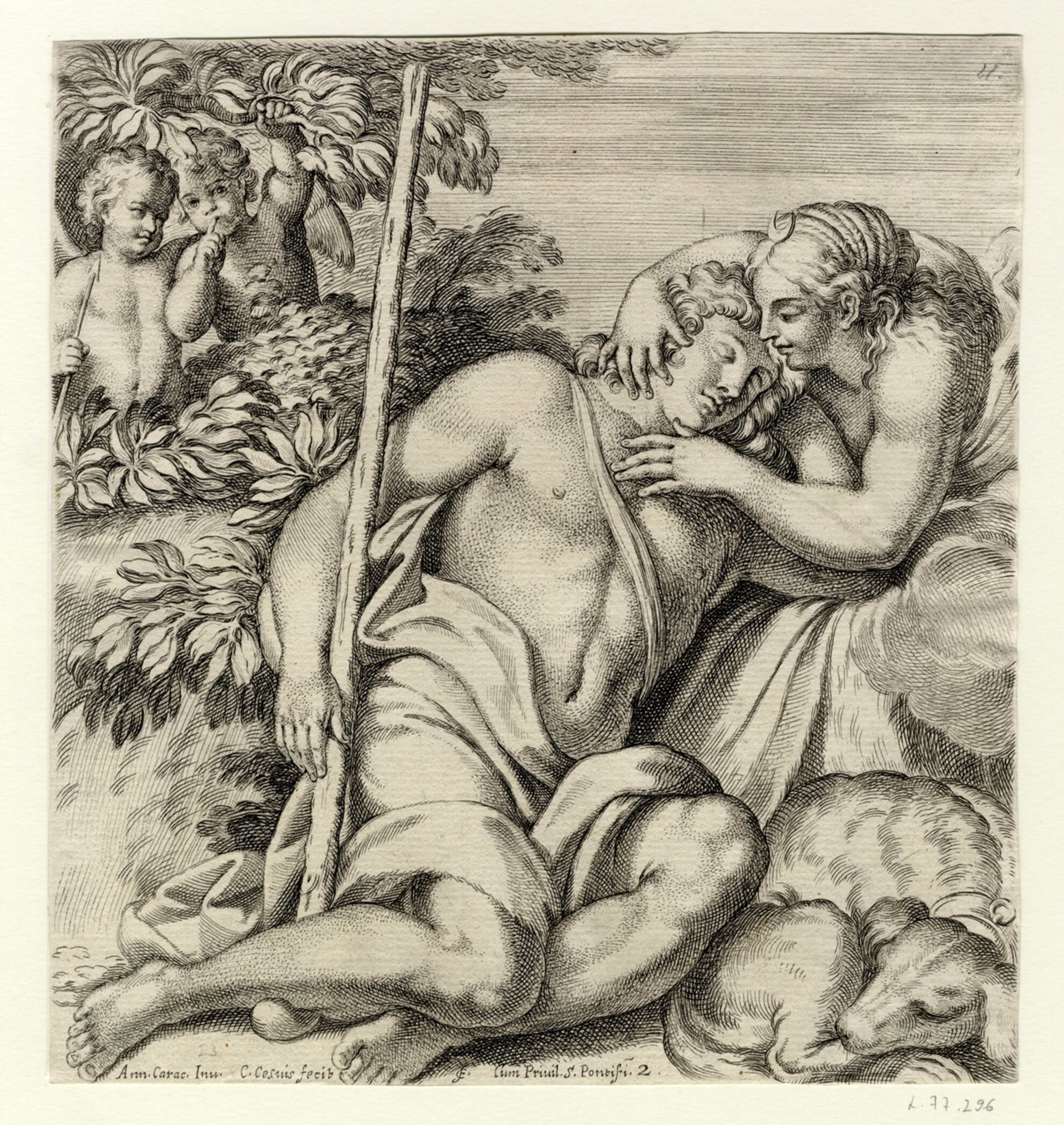In all, 32 works have been curated by art historian Júlia Tátrai for Divine Seduction, paintings, sculptures, drawings and woodcuts portraying well-known figures from Greek mythology, gods, goddesses and demigods. Some are quite explicit, so be warned.

Some have
stories attached. In Zeus and Mnemosyne, one in a series created by Jacopo
Caraglio in 1527 entitled The Love of the Gods, the two deities are in the process
of creating a new muse. The works did not cause a scandal in its day simply
because the characters had already been depicted by Giulio Romano in 1524.

The original had been too profane for the Church – Romano was imprisoned and his 16 images destroyed, although a few copies and fragments remained. The Caraglio series, based partly on these drawings, turned to the Ancient Greeks and Romans for inspiration to form a new symbiosis. This type of art form, it was thought, pleased God, and therefore the Church. Even so, another Caraglio picture on display here shows Jupiter with a huge phallus.
The story of the two series provides a perfect example of what was and wasn’t allowed during that time.

Erotica excited and interested people in the same way as today, no matter how harsh the power that ruled over them, secular or ecclesiastical. Pictures from the 1500s seem to be somewhat exaggerated by today’s standards, even leaning towards the pornographic. Caraglio’s copper engravings fit in this category, as do Romano’s originals. The human characters and the workmanship of the images are of an artistic standard.

Nevertheless, the point was to show the act, the passion, the physical exertion. The fact that the Church was very distant at that time, and that the Ancient Greeks and Romans believed in other gods and lived by their own morals, also contributed to these works being permitted.

This well-conceived, comprehensive exhibition, documents not only the origin of each work, but also describes the mythological figures depicted and stories attached to them.
Also featuring paintings by Hungarians, Gyula Benczúr and Bertalan Székely, the exhibition runs until 17 April.

Exhibition information
Divine Seduction
Michelangelo Hall
Museum of Fine Arts
1146 Budapest, Dózsa György út 41
Open: Until 17 April, Tue-Sun 10am-5pm
Tickets here




